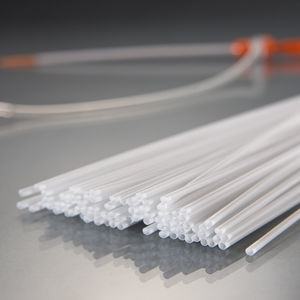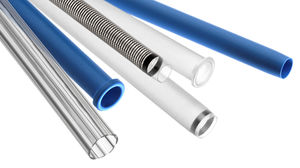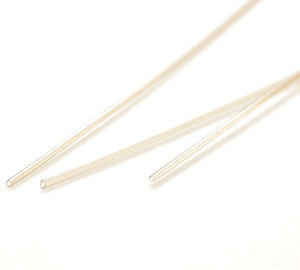
- Secondary care
- Cardiology
- Support microcatheter
- Dutch Technology Catheters

- Products
- Catalogs
- News & Trends
- Exhibitions
Support microcatheter guidingcoronaryhydrophilic
Add to favorites
Compare this product
Characteristics
- Application
- support, guiding
- Area of the body
- coronary
- Options
- hydrophilic
Description
A Guide catheter makes it easier to enter that vessel with other devices or instruments. Guide catheters are used to facilitate the placement of lasers, stents, and balloons for angioplasty.
An optimal guide catheter support is vital for successful interventional cardiology. The ideal guide catheter has an atraumatic soft tip, excellent torque control, adequate support, and low surface frictional resistance for good trackability of devices.
Wire braided construction for high torque, stability and control.
Multi-durometer sections provide varying degrees of flexibility.
Soft atraumatic bumper tip minimizes damage to vessels and tissue.
A combination of a large lumen and thin wall enables ease of passage through complex anatomy.
Low friction PTFE liner that supports the smooth delivery of guidewires or high viscosity fluids.
Excellent catheter shape retention provides maximum reliability for prolonged operation.
Most frequently used diagnostic coronary catheter shapes: LCB, RCB, EBU,Amplatz Left, Jacky, Tiger, Judkins Right (JR), Multipurpose A2, IM, IM VB-1,Judkins Left (JL),3D LIMA
Sizes from 4F – 8F
Widely available choice of guide catheter shapes
Customizable braid patterns and color
Value-added services: Tip forming, flaring, bonding, hydrophilic coating, embedded platinum/gold marker bands, tungsten fillers and marker bands, hub and strain relief attachments, printing.
Catheter Materials: Pebax, PTFE, Nylon, FEP, PU, HDPE, ETFE
Wire Type: Round, Flat, Hybrid (Round & Flat)
Wire Materials: Stainless Steel, Nitinol, Copper, PEEK, Nylon
Braid Patterns: Diamond, Regular, Half Load, Coil
Other Dutch Technology Catheters products
OEM Catheter Products & Parts (Full assembly / PTFE / Shafts / FEP HS / Shafts etc)
*Prices are pre-tax. They exclude delivery charges and customs duties and do not include additional charges for installation or activation options. Prices are indicative only and may vary by country, with changes to the cost of raw materials and exchange rates.











